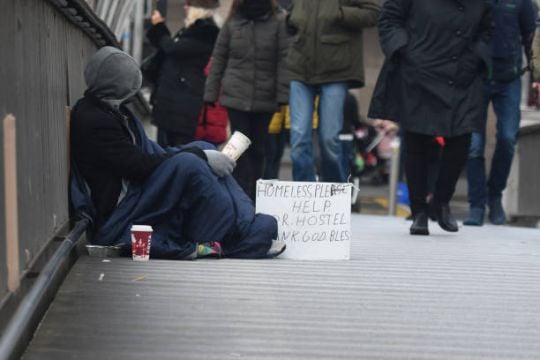Those most at risk of poverty in 2019 were individuals who were not at work due to illness or disability, according to data from the Central Statistics Office (CSO).
According to the CSO's Survey on Income and Living Conditions for 2019, 37.5 per cent of people with an illness or disability and 35.4 per cent of the unemployed were at risk of poverty last year.
Overall, the CSO said the at risk of poverty rate in 2019 was 12.8 per cent, compared with 14.0 per cent in 2018. The consistent poverty rate was 5.5 per cent in 2019 compared with 5.6 per cent in 2018
One in seven 13.5 per cent of people living in rented accommodation were in consistent poverty, compared with one in 50, 1.8 per cent of those in owner-occupied accommodation
Median household disposable income was €43,552 in 2019, compared with €42,865 in 2018.
National poverty indicators
Median equivalised income was €23,979 in 2019, an increase of 4.8 per cent from €22,872 in 2018. Equivalised income is a measure of household income that takes account of the differences in household size and composition.
Commenting on the report, Eva O’Regan, statistician, said:
‘The SILC household survey is the official source of data on household and individual income and it provides a number of key national poverty indicators, such as; the at risk of poverty rate, rate of enforced deprivation and the consistent poverty rate.
"The key findings show that in 2019, the median annual household disposable income was €43,552, compared with the 2018 value of €42,865.
"Disposable household income is gross household income less total tax, social insurance contributions and inter-household transfers paid. The mean household disposable income was €53,118 in 2019, compared with €51,458 in 2018."

The survey also provides insight into poverty in Ireland. The at risk of poverty rate is the share of persons whose equivalised income was less than 60 per cent of the national median equivalised income.
In terms of age groups, out of those aged 0-17 , 8.1 per cent were in consistent poverty, compared with 5.1 per cent of those aged 18-64 and 2.3 per cent of those aged 65 and over.
The increase in equivalised income between 2018 and 2019 was statistically significant, while other annual changes outlined above were not statistically significant.
Speaking about how the CSO carried out the survey, Ms O'Regan said:
"Due to public health guidelines regarding Covid-19, our interviewers no longer conduct CSO household surveys in the sampled households' own homes.
"Sample households now receive introductory letters by post asking them to ring the CSO to schedule an interview which is conducted over the phone. These surveys give us a picture of the economic and social situation of the citizens of Ireland, with a level of accuracy no one else can gain. "







